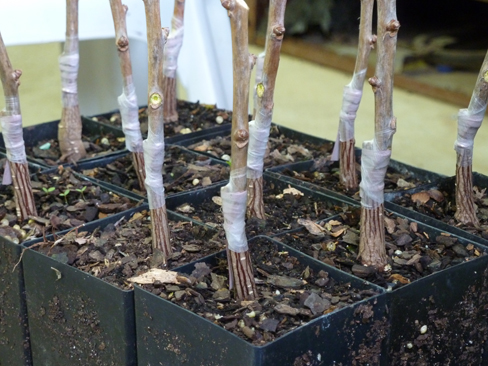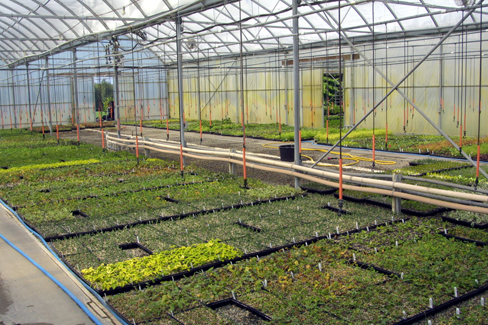Propagation Nursery
Propagation nurseries produce pre-finished plant material (liners), such as ornamental trees, shrubs, and grasses, fruit trees, and annual and perennial flowers. Plants are propagated either by seed or by vegetative means, such as by cuttings, grafting or tissue culture. Some nurseries specialize in growing and selling pre-finished plants to other growers, making propagation their sole business. However, some wholesale nursery operations have their own propagation areas where plants are produced for in-house use.
Marketing
 Liners are typically sold in bulk quantities to other wholesale nurseries, landscape nurseries or retail nurseries, which grow the plants to a larger size. These sales can, but do not necessarily, involve a contract between the propagation nursery and their customer. Internet and mail-order marketing is commonly used by propagators, allowing businesses to reach national and possibly international markets. Liners of small plants, such as annual flowers, are commonly sold as “plugs” in trays containing small, square cells. Liners of trees and shrubs, however, are typically sold either in containers or as dormant, bare-root plants.
Liners are typically sold in bulk quantities to other wholesale nurseries, landscape nurseries or retail nurseries, which grow the plants to a larger size. These sales can, but do not necessarily, involve a contract between the propagation nursery and their customer. Internet and mail-order marketing is commonly used by propagators, allowing businesses to reach national and possibly international markets. Liners of small plants, such as annual flowers, are commonly sold as “plugs” in trays containing small, square cells. Liners of trees and shrubs, however, are typically sold either in containers or as dormant, bare-root plants.
Production
 Many plants are propagated by seed, but for selected cultivars that must be reproduced as clones, vegetative propagation methods are used. The most common of these methods include the use of cuttings, grafting, plant division and tissue culture. The method used depends on the plant species, as well as grower capabilities. Cultivars of woody plant material are most commonly reproduced by cuttings. Parent stock plants used for vegetative propagation must be true-to-type, vigorous, and disease- and insect-free. In some cases, with proper planning, propagation can be conducted year-round. For example, cuttings of some woody plant species can be taken for propagation almost year-round, while others must be collected during specific seasons or even at a very narrow window of development. Some cuttings can be ready to sell as liners in 10 to 12 weeks.
Many plants are propagated by seed, but for selected cultivars that must be reproduced as clones, vegetative propagation methods are used. The most common of these methods include the use of cuttings, grafting, plant division and tissue culture. The method used depends on the plant species, as well as grower capabilities. Cultivars of woody plant material are most commonly reproduced by cuttings. Parent stock plants used for vegetative propagation must be true-to-type, vigorous, and disease- and insect-free. In some cases, with proper planning, propagation can be conducted year-round. For example, cuttings of some woody plant species can be taken for propagation almost year-round, while others must be collected during specific seasons or even at a very narrow window of development. Some cuttings can be ready to sell as liners in 10 to 12 weeks.

